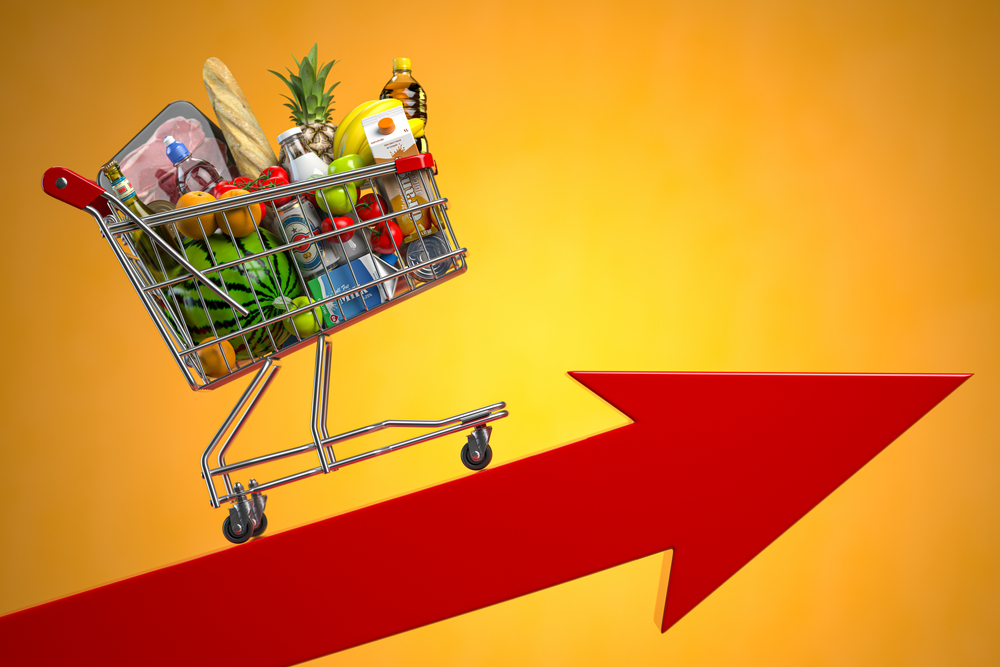Household Bills
Cost-of-living crisis enters ‘new phase’ as food price shock to overtake energy

Much of the focus on the cost-of-living crisis has centred on energy, but food prices are expected to continue rising, posing the biggest threat to family finances according to a leading think tank.
Food prices have leapt 25% in the past 18 months, with households estimated to pay £1,000 more this summer compared to 2019/20.
By comparison, even though energy prices have risen faster, bills will be £900 more expensive, meaning food price inflation will be larger.
“The food price shock is about to overtake the energy price shock as the biggest threat to family finances”, the Resolution Foundation said.
The leading think tank said the cost-of-living crisis is often thought of as an energy crisis, but this is an “increasingly inadequate view”.
Energy price peak makes way for food bill shock
Energy prices are expected to have peaked, loosening their grip on the Consumer Prices Index measure of inflation but food prices are forecast to keep rising this summer and will become the main contributor to the inflation figure for 2023.
The Resolution Foundation said that inflation is on the way down – having plateaued close to 40-year highs since the autumn – and that sharp falls are anticipated from next week with a near two percentage point reduction from March’s 10.1% recorded.
“This marks the end of the peak energy costs part of this crisis, albeit without energy bills remotely returning to pre-crisis norms. This first significant fall is driven by April 2022’s large increase in the energy price cap dropping out of the annual inflation calculation,” it said.
Next week will also see confirmation that energy prices will actually fall from July as the energy price cap is expected to be reduced from £2,500 to £2,063 – reflecting the retreat of wholesale energy prices, and contribute to inflation falling back further through 2023.
Meanwhile, food price inflation reached 19% in March, the highest in almost half a century. The Foundation said that while food price inflation should eventually fall “relatively rapidly later this year” factory gate prices – which tend to lead movements in consumer food prices – suggest that the level of food prices could easily continue rising into the summer.
“As a result, food prices will be contributing far more than energy to CPI inflation through the remainder of 2023. Between March and September 2023, food prices are expected to contribute around two percentage points to inflation each month, while the contribution of energy prices is set to fall from three percentage points to less than one,” it noted.
Food insecurity
As part of its Food for Thought report, it said the public has recognised the challenges of rising food prices, with research from the Office for National Statistics revealing households are more worried about food than energy prices (51% vs 48%).
However, it added that “it’s far from clear that political and policy debates have caught up to the scale of what is going on. Maybe that’s not surprising: pain arriving via millions of weekly supermarket receipts is less visible to policymakers than that announced via a single Ofgem press release. But this needs to change and fast, because by this summer, food costs will have overtaken energy bills in the scale of the shock they are administering to family finances.”
The Foundation explained that food makes up a far larger share of the typical household’s consumption (13% vs 5% in 2019/20), adding that in Q3 2023, 16 million households (56%) are set to face a bigger food than energy cost shock since 2019/20.
Further, the combination of food and energy price rises is so “toxic” for low-income households as both are essentials which typically represent a higher proportion of lower-income households’ spending.
One way households can protect themselves from price shocks is to change consumption patterns. When it comes to food, people trade down to lower price goods. But if you’re already buying budget or own-brand essentials, you can’t go lower to find cheaper alternatives.
“What happens instead? Poorer households have to cut rather than adjust their consumption – which is another way of saying they eat less: 61% of the poorest one-fifth of households report cutting back on food and other essentials compared to 35% for the richest one-fifth,” it stated.
The job is not done
The Foundation said that policymakers shouldn’t see the fall in energy bills as meaning the job of supporting households through the crisis is complete. Energy bills will remain above pre-pandemic levels for a start, and it is right that the Government uprated benefits in April by 10.1% and introduced Cost of Living Payments.
“However, the one-size-fits-all nature of those lump sum payments means they are not well suited to help some of those worst affected, in particular larger families,” it noted.
Lalitha Try, economist at the Resolution Foundation and one of the authors of the report, said: “Everyone realises food prices are rising, but it’s less clear that the scale of the increases has been understood in Westminster.
“This summer the food price shock to family finances is set to overtake that from energy bills. What remains consistent is that those on low-to-middle incomes are worst affected.
“The cost-of-living crisis isn’t ending, it’s just entering a new phase.”
Related: BLOG: Headline inflation figures mask the complex food price challenge